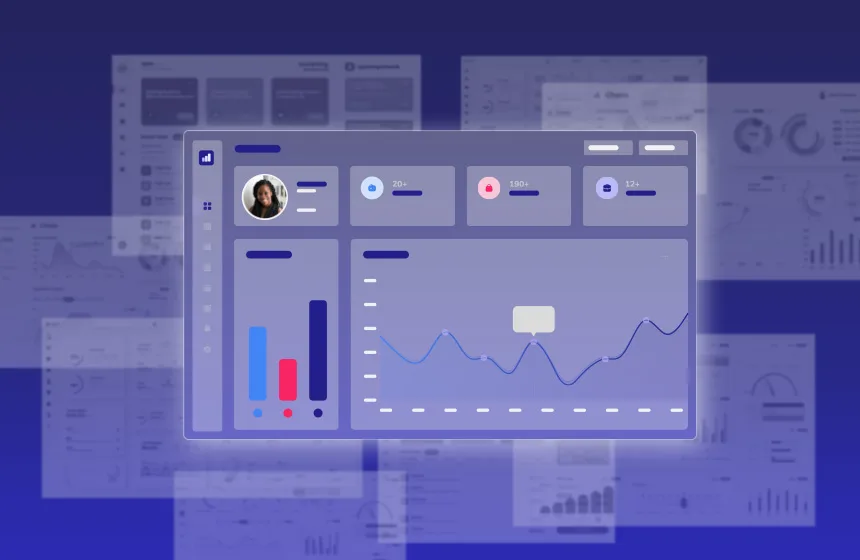Accelerate deals and increase win rates with the leading enterprise AI demo platform.
Ditch the Deadly Demo: Stop Death by a Thousand Clicks

December 19, 2025
Table of Contents
“The meeting was great, but I really wish that deck was longer.”
This is not something any human being has ever said, or thought, even once since PowerPoint was invented in 1987.
So why are we still delivering demos that are the equivalent of the teacher taking attendance in Ferris Bueller’s Day Off?
Not to hate on decks and slides—they’re incredibly useful and valuable in many contexts. But if you are in SaaS sales and presales, and you’re trying to get someone to buy your product, showing them a 30-page deck is not going to do it.
Or a guided demo that is 85 screens long, where you’re clicking endlessly around the site to show a new prospect every single bell and whistle you have to offer.
While your demo delivery is hopefully not in that exact same monotone Eugene Levy uses to such comedic effect (we hope not, anyways), rooting out the cause and finding solutions to eliminate it for good will help you close more deals.
The telltale signs of the deadly demo
Every sales rep and solutions engineer has had this happen at least once. You get into the sales demo and you’re feeling good—maybe the discovery was really thorough or the prospect is a great fit for your product.
But then your demo attendees stop making eye contact. They start rustling papers or glancing at their watch or, horror of horrors, checking their Slack messages. You’ve lost them, and once that happens it’s hard to get the demo momentum back on track.
These live sales demos aren’t just bad because the prospect is bored. Boredom isn’t exactly the emotion you want your prospect to experience in a demo, but it doesn’t kill deals on its own.
The real problem is that painfully dull demos can make you seem out of touch with customer needs and preferences.
For example, let’s say you’ve got a prospect who is super interested in your product. Like most of today’s self-educated B2B buyers, they’ve checked out your website, where they experienced a self-guided interactive product tour, looked at your G2 reviews, and talked to someone who uses it. Now they ask you for a demo.
Did you know?: Proactive product education builds buyer trust and accelerates their decisions.
That prospect doesn’t want to see every single feature in action. They certainly don’t want to see your login screen. They want to see how your product will work for their specific use case. Buyers are looking for that “aha!” moment where they realize the actual value of your product and why they need it.
And instead, you’re just clicking and talking and clicking and talking until they wonder, “does this rep/SE/company really understand what I need? Maybe I should go look at their competitors again.”
On the flip side, if your prospect is totally new to exploring your industry and product, the endless demo will simply overwhelm them and leave them wondering what exactly you can help them with.
Houston, we have a problem.
Why deadly demos happen
So why are these bad sales demos happening? AEs and SEs are professionals who want to succeed at their jobs and often have plenty of experience closing deals—you know what you’re doing. It’s unlikely any of you are thinking, “let’s make a thirty-page deck and then read it line by line to this prospect and they’ll love it!”
But a few things can get in the way. One is excitement—you’re showing off this product your company has worked really hard to create, and you’re delighted about all the cool features your product team has developed. This is super common with new startups, especially if you’re creating a category.
Another big cause is discomfort with the lack of discovery in the sales cycle today. It used to be that prospects needed to go through a thorough discovery process—you’d ask them questions and develop a demo script based on that discussion.
But buyers come in asking for demos all over the sales cycle now, and if you don’t have that script you might just default to showing them everything and hoping something sticks.
A third cause is simply not understanding where your buyer is in their journey. Sure, maybe they want to see everything. But it’s also very likely they’ve done a ton of research on their own and just want to see a few specific things and get some technical questions answered.
B2B prospects today spend only 17% of their buyer’s journey with a sales rep—and your sales and demo processes might not have kept up with that new world of selling.
Killing the deadly demo for good
Now that you know what might be making your demo deadly dull, how can you fix it?
First, think of your demo as being more like your website experience. That’s (hopefully) very carefully built with the user experience at the forefront—you never want a visitor to have to click more than three or four times to get exactly where they want to go. Your demo should deliver the same experience.
Again, Modern-day B2B buyers have different expectations (have we said this enough), so that means you need to get flexible and creative.
4 tips to deliver a compelling live sales demo
1. Bring demo and discovery together
Get it closer to what prospects want, instead of what your sales team is used to. This might mean asking a few disco questions as the demo is kicking off instead of having a separate call. You can ask discovery questions like, “What feature would be most helpful to you?” and then navigate the demo directly to that feature when they answer. Or having a few types of premade product demos you can deliver fast depending on the buyer journey stage.
2. Develop a few different demos
But not just segmented by industry or vertical—based on the end-user experience and stage in the buyer journey instead. You can create a library of premade custom interactive demos (aka a demo library) with a no-code demo creation platform like Reprise tailored to where your buyer currently is.
3. Show them the “take my money” moments
Hide unnecessary information and steps and direct their gaze towards the magic of your product. You can’t do this if you’re using a live product login as a demo. After all, your prospect won’t be impressed by your product’s best features if they have to walk them through piles of irrelevant things to see them. And the dummy accounts used for live product logins are filled with the mess of everyone whose tread there before. Instead, come to the live call with a demo that hides the necessary messes and keeps your prospects’ attention directed at the “take my money now” product features they came to see.
4. Send a post-call guided demo (sales leave-behind)
You don’t need to worry about cramming in every possible feature when you know you can email a quick interactive demo as a sales leave-behind after the call is over, speaking to exactly what your prospect finds relevant. (Again, this is where Reprise comes in handy!) And let’s be honest, an interactive guided demo for sales enablement is better than a static one-pager any day.
As Jenn Steele, a former product marketing leader said:
“I’ve written about 1,000 one-pagers, and probably only 10 of them were ever read.”
Another powerful feature of sending a guided demo as a sales leave-behind is the ability to multi-thread deeper into the company. Gartner states, “An average of 11 individual stakeholders are involved in a B2B purchase; that number can occasionally flex up to nearly 20.”
The best way to get rid of the deadly demo once and for all is to identify the magic of what your product does, and the “wow!” moments you want prospects to experience about a specific feature or use case, and stick to that—at least in your first demo.
As you’ve noticed, at Reprise we call those the “take my money” moments because they instantly identify what your product offers to your customers.
It’s like selling a really gigantic mansion—instead of wandering through every room and opening every closet and cupboard (we all know what cupboards look like), you find the feature or experience that will make that exact buyer see themselves in a whole new, better life there.
That magic moment is going to be different for the 25-year-old tech millionaire (she wants a high-end walk-in closet) than the family of five (they need a tiki bar in the basement for post-bedtime cocktails), so you need to determine what works for each person.
But once you land on it and deliver it quickly, you can move forward in the process faster. And you can save everyone from the most modern of horrors: being trapped in a room, on Zoom or in real life, while someone reads a thirty-page deck at you.







